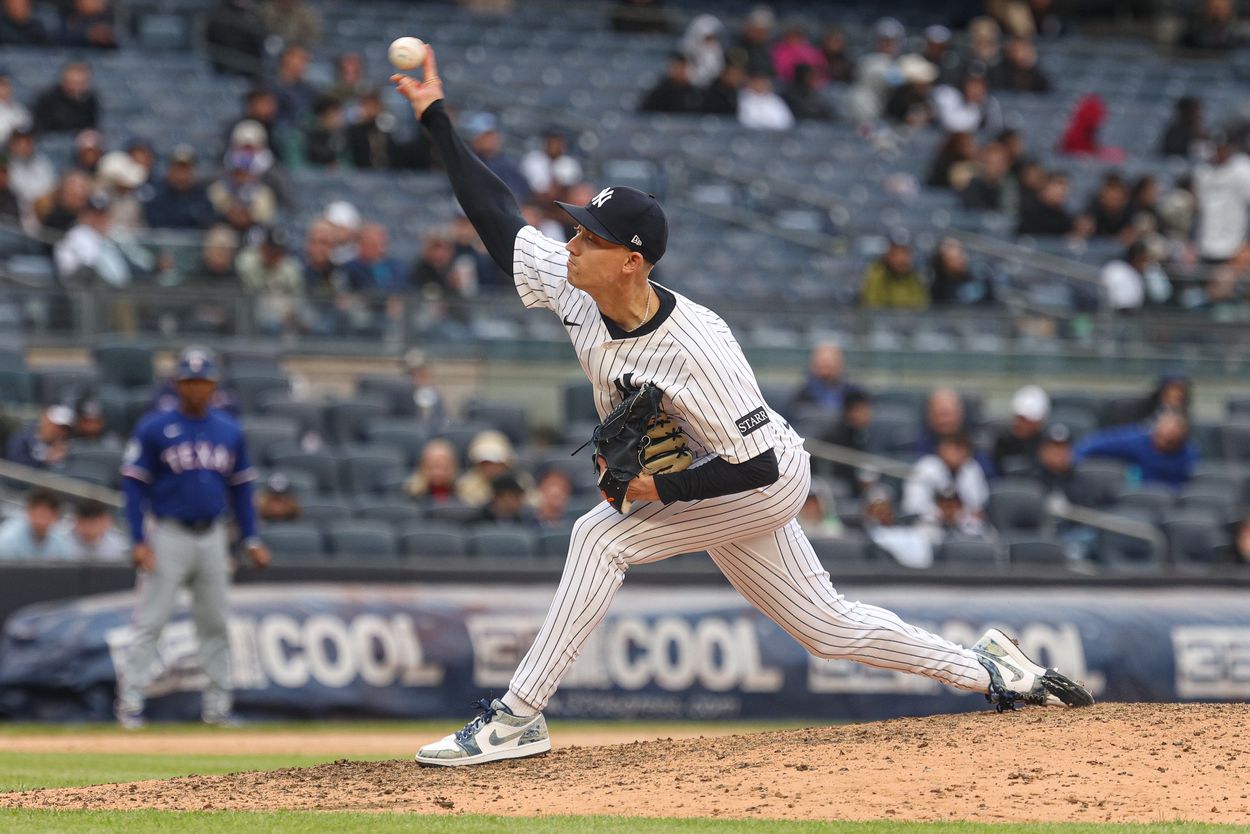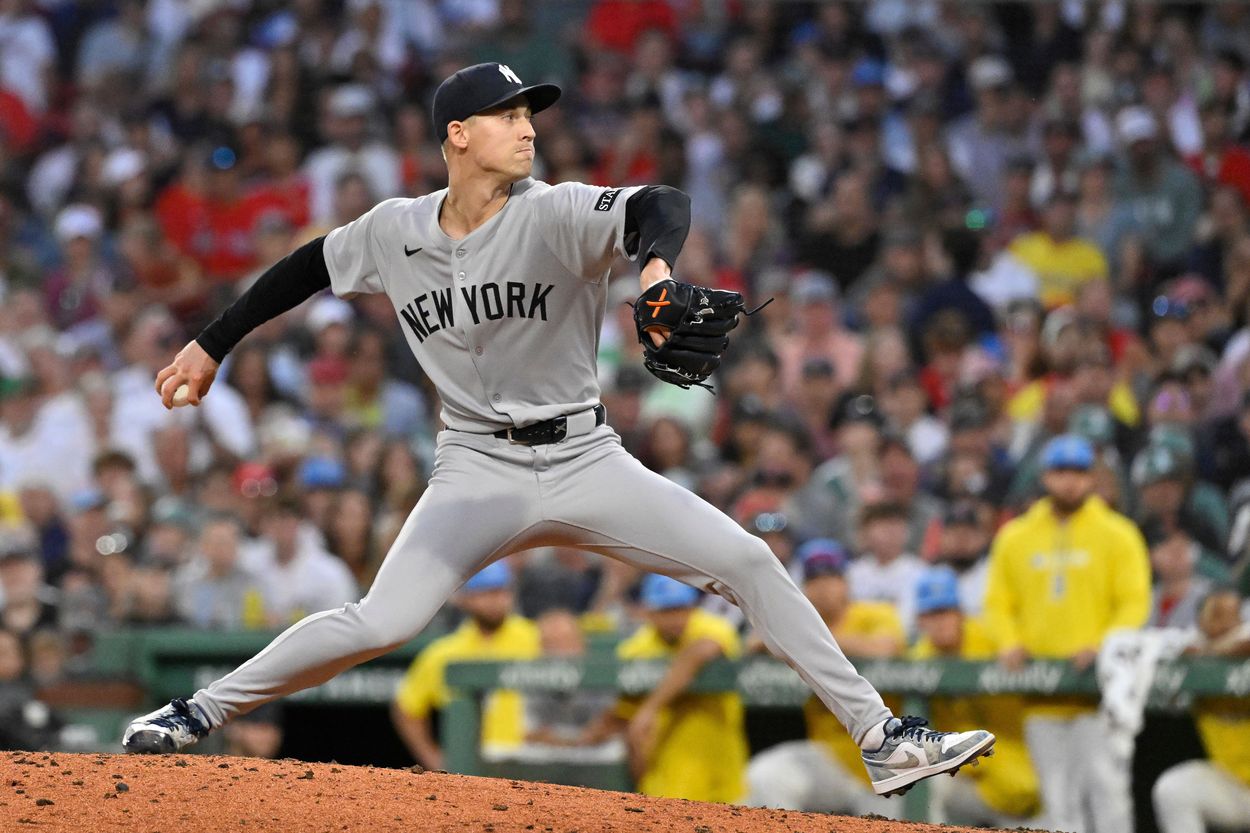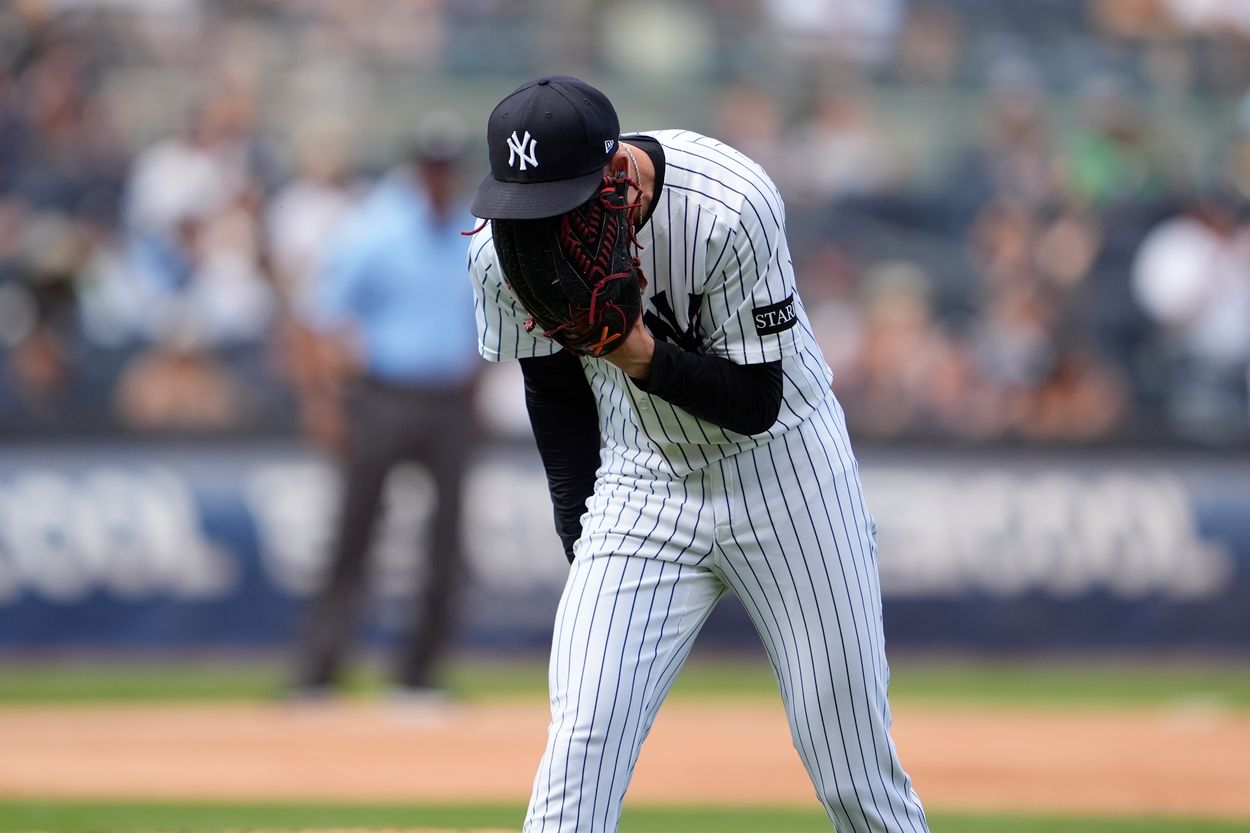
The New York Yankees’ bullpen, long known as a strength, unraveled in 2025. Even after midseason reinforcements like David Bednar and Camilo Doval arrived, the group never found its rhythm. At the center of that uneven story was Luke Weaver—a pitcher whose year swung from near-dominance to deep frustration.
Weaver’s final 3.62 ERA might look respectable on the surface, but numbers can lie. Beneath that stat line sits a tale of disruption, injury, and a player trying to rediscover the sharp edge that once made him indispensable to the Yankees’ relief corps.
From ace reliever to uncertainty
Before a late-May hamstring injury derailed his season, Weaver looked electric. He had allowed just three earned runs in 25.2 innings, good for a 1.05 ERA, mixing pinpoint command with a deceptive changeup that baffled hitters. It was the continuation of a breakout stretch that began in 2024, when he posted a 2.89 ERA over 84 innings and solidified his role as one of the Yankees’ most reliable arms.

But once Weaver went down, everything changed. The injury forced him onto the IL for several weeks, and when he returned, the crispness was gone. His fastball lost bite, his timing was off, and opponents seemed to know what was coming. A late-season pitch-tipping issue became the final straw, turning a promising season into a patchwork of what-ifs. Over his final 39 innings, Weaver stumbled to a 5.31 ERA and looked far removed from his pre-injury form.
What comes next for Weaver and the Yankees?
Now, as free agency looms, Weaver stands at a crossroads. Should the Yankees take another chance on him, hoping that health and mechanical adjustments can restore his 2024 version? Or is it time for both sides to move on?
SNY’s Phillip Martinez believes there’s still a path forward if fences can be mended. “The Yankees know Weaver—bringing in a new arm could have its drawbacks—and Weaver has proven he has the mentality to handle big moments and the big city,” Martinez wrote. He added that a short-term deal could make sense, perhaps a low-risk contract with incentives or an option year that gives both sides flexibility.
From a team perspective, Weaver’s familiarity and proven ability to thrive under pressure hold value. The Yankees’ bullpen still needs stability behind Doval, and Weaver could fill that bridge role if he regains form. But there’s a catch: the right-hander reportedly wants another shot at starting, which could complicate negotiations. If a rotation opportunity opens elsewhere, Weaver might price himself out of New York’s comfort zone.

A clean slate could change everything
Still, there’s reason for optimism. When healthy and mechanically sound, Weaver has shown the poise and command that once made him a late-inning weapon. If he can fix his pitch sequencing and regain confidence, a reunion with the Yankees could benefit both parties. Sometimes, a new year and a reset are all a player needs—much like a pitcher wiping the chalk clean before the next inning.
As Martinez noted, “Fans should look at the bigger picture. Yes, the lows were rough, but for most of the season, Weaver was dominant—and it’s hard to dismiss what he did in 2024.” That balance of potential and inconsistency defines his story heading into 2026.
Whether Weaver’s next chapter unfolds in the Bronx or somewhere else, it’s clear that his journey isn’t finished. He’s been too good, too recently, to fade quietly from the picture.
